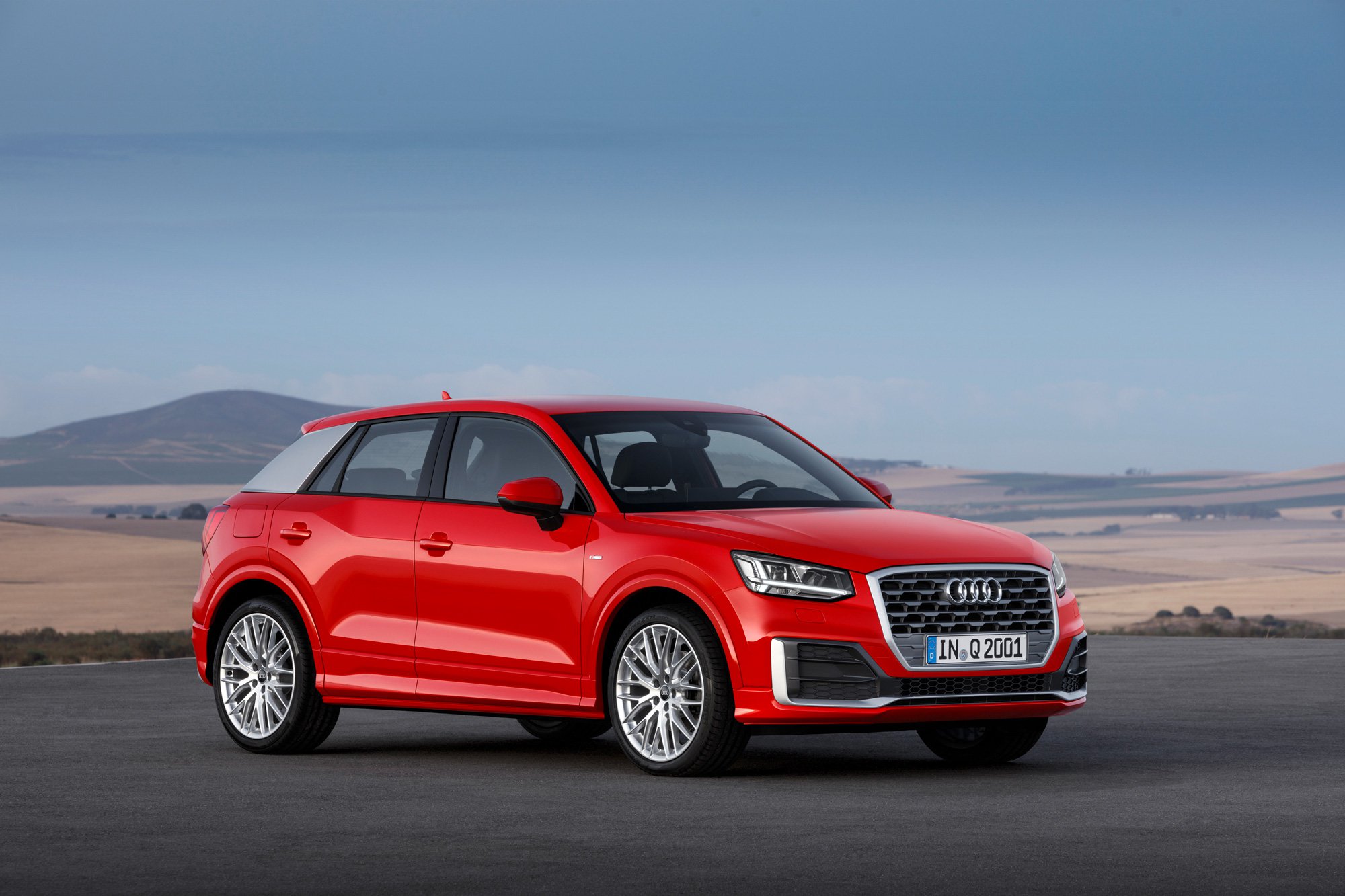The market for compact SUVs is rapidly expanding, but Audi is the first of the premium car manufacturers to enter this sector. Its Q2 is its smallest SUV and a rival to the likes of the Nissan Juke, Vauxhall Mokka, Renault Captur and Mazda CX-3.
Like those cars, it boasts a raised driving position and is available with a range of petrol and diesel engines, manual and automatic transmissions and front- or four-wheel drive.
Being an Audi, it offers one of the best interiors anywhere on the market, but is that enough to justify a price premium over its non-premium rivals?
Here’s a list of pros and cons.
Space in the Audi Q2
The Q2’s boot is big enough for most baby baggies, and you can use a floor divider to either have more space or a flat (if high) loading lip. Note, however, that if you opt for the Bang and Olufson stereo upgrade its subwoofer takes up about 20 percent of the boot.
For longer loads, the rear seats fold down, and with the boot floor in its raised setting you get a flat load bay.
Seats in place, the rear offers just enough room for one tall adult to sit behind another. The middle seat is narrow, however, and there’s a big lump in the centre of the floor to straddle, so it is best reserved for kids.
In the front, you might occasionally find yourself brushing elbows with your passenger, but there are sufficient storage spaces for odds and ends, including decent-sized door pockets. What you don’t get are sliding rear seats, meaning the Q2 lacks the versatility of a Renault Captur.
Comfort of the Audi Q2
On standard suspension and 17-inch wheels the Q2 offers a comfortable enough ride; true, it is never completely smooth, but nor does it jiggle you around excessively, regardless of speed. That, however, changes if you opt for an S-line model on 18-inch wheels, particularly if you also choose the sports suspension, at which point the ride becomes far too harsh.
The 1.6-litre diesel engine is quiet once up to speed, but rattles at idle and is noisier under acceleration than the 1.4-litre petrol.
Tyre and wind noise are well suppressed, and while the seats are a little narrow they are still comfortable on longer drives.
Dashboard Styling of the Audi Q2
The Q2’s dash is a delight to use, with a mixture of easy to hit buttons for the heating, and a rotary controller (plus a handful of shortcut buttons) for the infotainment screen.
The screen itself is clear and the systems intuitive to navigate (you can also add full smartphone connectivity including Apple Carplay), plus you can upgrade to a widescreen version for extra wow factor.
Similarly, Audi offers the Q2 with its Virtual Cockpit, which replaces the conventional instruments with a 12-inch digital customisable display, which can even show the satnav. It lends the Q2 a fantastically futuristic feel, although it is disappointing that it is only available as part of an expensive Technology pack on the options list.
Driving Ease of the Audi Q2
Wide windscreen pillars occasionally obstruct your view when cornering, and the thick “blades” or pillars at the rear of the car mean you tend to rely on proximity sensors when parking (again, an optional extra), but those points aside the Q2 is delightfully simple to drive.
The controls are well weighted and positive in their response, whether it’s the clutch, the brakes or the gearshift. The optional automatic shifts smoothly and is responsive when you need a lower gear for overtaking. Speaking of which, all models have ample pulling power to keep up with traffic.
The steering is well weighted and the raised driving position allows you to see over traffic, resulting in a relaxing driving experience.
Keen drivers will be better off in a Mazda CX-3, but the Q2 is otherwise about as good as it gets in this class. While offering adequate shove, the 1.6 diesel won’t excite with its performance, but the 1.4 petrol revs keenly and, aside from some lethargy at very low revs, actually feels quite quick.
The steering is accurate and has a reassuring weight to it, and the Q2 has a good amount of grip, allowing it to change direction quickly and without much body lean.
Reliability of the Audi Q2
Audi doesn’t have the best record for reliability.
It’s also worth noting that Audi’s warranty last for three years or 60,000 miles – whichever comes sooner – whereas Renault offers four years of cover and Ssangyong five.
The most efficient Q2 currently on sale is the 1.6-litre diesel, which returned 64mpg in official tests, or up to 55mpg in normal driving. That’s far from the bottom of the pile for a car of this type, but still places the Q2 behind the most economical diesel in this class, such as the Peugeot 2008, which manages more than 60mpg in normal driving.
The 1.4-litre petrol model uses a system that can shut two of the four cylinders down when they are not needed in order to save fuel. This is undetectable to the driver and helps the car achieve real-world economy of about 44mpg against an official test figure of 52mpg. There is no penalty in terms of fuel economy for choosing the seven-speed automatic gearbox.
Safety of the Audi Q2
All models come with the expected airbags and Isofix mounting points, as well as a system that can apply the brakes to individual wheels to prevent the car from skidding, plus another that will automatically apply the brakes to help prevent a collision with a vehicle or pedestrian in the car’s path.
The options list features almost all of Audi’s advanced safety systems, such as active cruise control that can keep you a set distance from the vehicle in front, including down to a standstill, blind spot monitors, and even a traffic jam assist that will steer the car in slow moving traffic.

